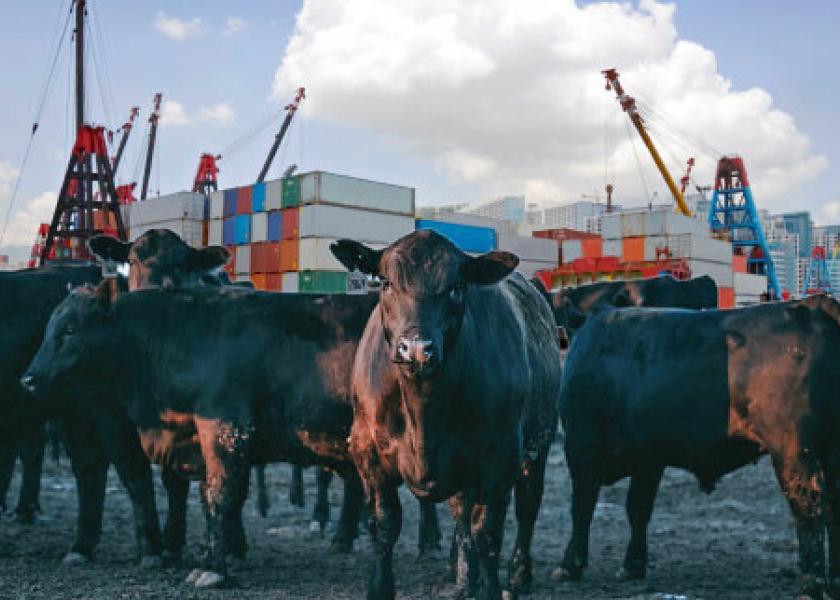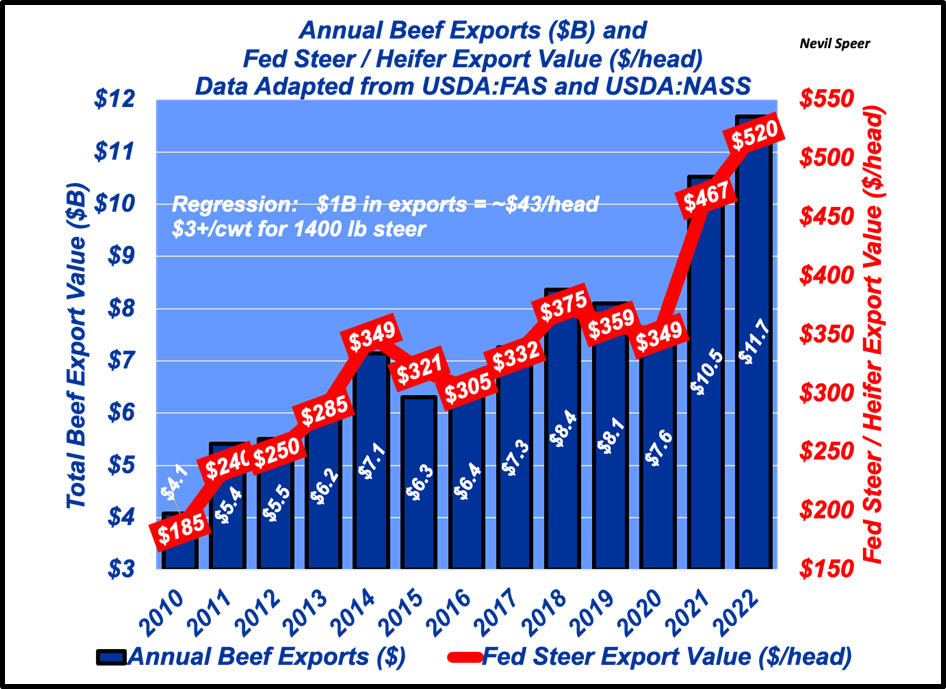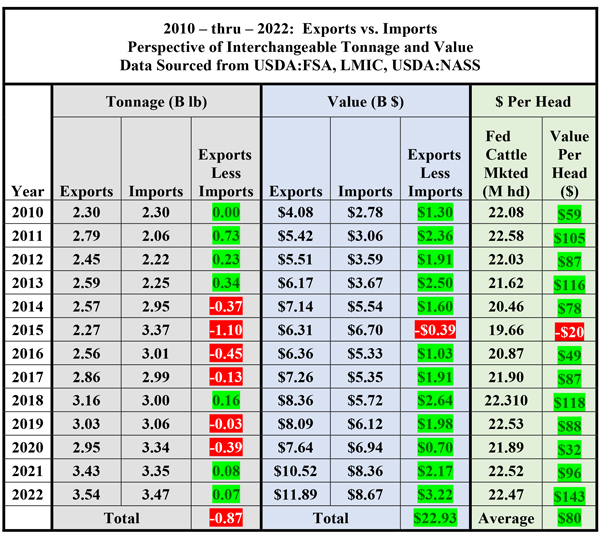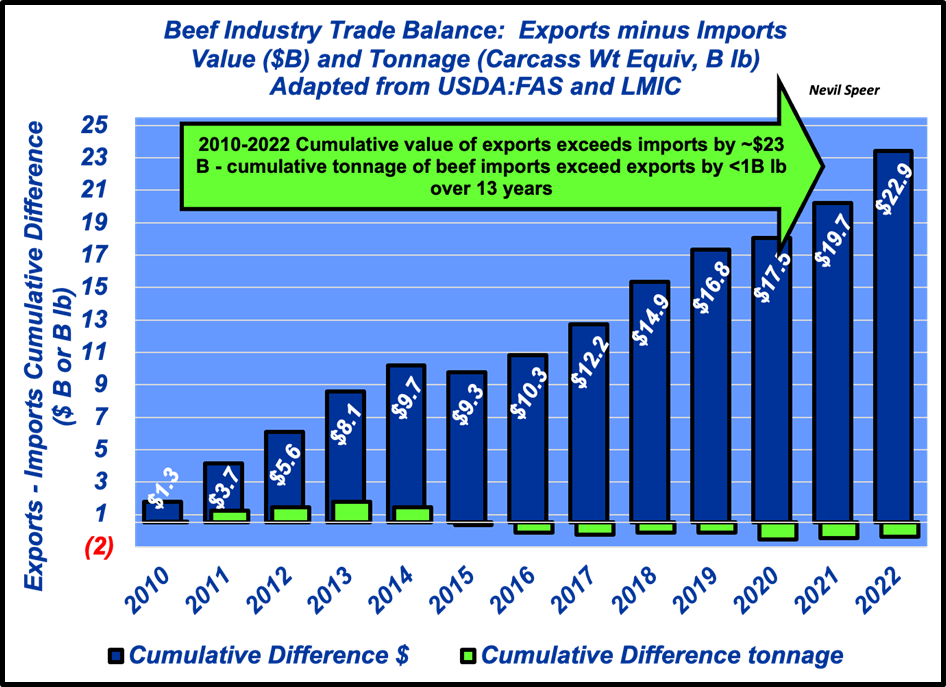Speer: Cowlandia, Exports, and the Real World

Starting with The Tale of Cowlandia, this is the fourth column in a series surrounding international trade and the beef industry. The second and third columns focused on trade’s broader economic framework and pervasive misnomers around imports, respectively. We’ll finish the series here by focusing on exports.
Case #1 Beef Exports: Despite numerous economic headwinds, the United States beef industry continues to grow the export market. Global customers purchased a record $11.7B worth of beef products in 2022 (11% better versus ’21 and a whopping 39% ahead of the five-year average).
The first graph highlights the data since 2010. Total export dollars have surged almost 3X during that time – the growth rate exceeding 9% annually. The graph also includes totals on a fed steer/heifer basis.

Last year’s export value translates to $520/head – equivalent to adding $37+/cwt to the fed market! And over time, the trend translates to better than $43/head for every $1B in export sales.
Case #2 For Argument’s Sake: Trade-deniers contend Case #1 is elusive. They describe imports and exports as being interchangeable. That is, trade represents wasted effort because we’re just swapping tonnage across borders – our beef for their beef. Hence, it’s all a frivolous apples-to-apples exchange.
For argument’s sake, let’s run with that supposition. The table below outlines annual imports and exports from both a tonnage and value perspective since 2010 (the second graph highlights the cumulative difference year-by-year).


First, tonnage: the protectionists have it right. Imports have outpaced exports during the past 13 years. But it adds up to only 870M lb – the equivalent of ~67M lb (emphasis million) annually. Now for some context: over the same time frame, annual beef production averaged 25.8 B lb (emphasis billion). In other words, the annual import/export difference is roughly one-quarter of one percent (.25%) compared to domestic production.
Second, value (the part that really matters): exports have outpaced imports by a cumulative difference of $23 B. So, even if one (incorrectly) contends beef imports and exports are fungible, there remains a huge value disparity over time. On an equivalent basis, exports have outpaced imports by $80/head for every fed steer and heifer marketed during the past 13 years.
Conspiracism: Nevertheless, protectionists keep telling a different story. For example, immediately following my initial Cowlandia piece, another column appeared discrediting the premise of free trade. More significant, it portrays international trade in a conspiratorial manner:
“The “globalist free traders” are using imports (and exports) to manipulate the US and world markets for beef and cattle. In the process, destroying ranches, farms, independent feeders, and rural communities. So far, “free trade” has not been a good bargain no matter how many checkoff tax dollars we waste on it.”
Real World: Several items from that short paragraph are especially important to unpack:
- Imports are depicted as being detrimental – again, the erroneous apples-to-apples comparison. (See also: Imports Add Value)
- Contrary to the data outlined above, exports are portrayed as meaningless to U.S. beef producers.
- Most important, the statement begins and ends with some representation of “they”. That relegates cattle producers to being victims who are seemingly being duped by some broader scheme involving international trade.
None of that stands the test of the real-world. Meanwhile, the facts underscore the significance of the ongoing work by the Cattlemen’s Beef Board and USMEF. No matter how you stack it, the consistent - and ever-growing - return on investment is an amazing success story. Cattlemen are direct beneficiaries of those efforts.
In the end, none of this is very complex (nor conspiratorial). International trade matters – and more than ever, U.S. beef producers are winning in the global marketplace.
Nevil Speer is an independent consultant based in Bowling Green, KY. The views and opinions expressed herein do not reflect, nor are associated with in any manner, any client or business relationship. He can be reached at nevil.speer@turkeytrack.biz.







